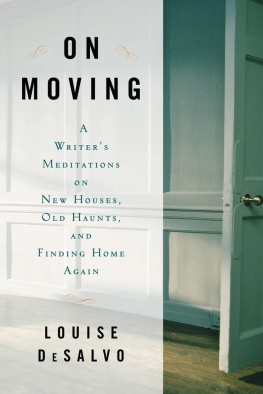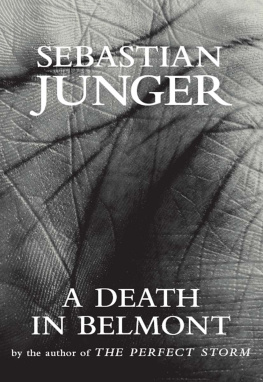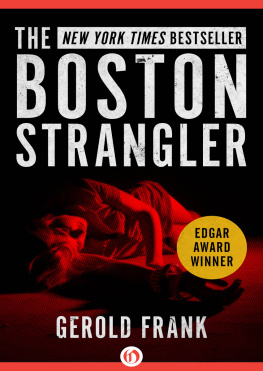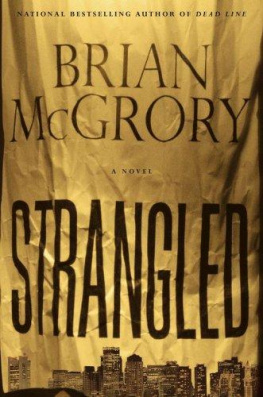ACKNOWLEDGMENTS
Since it was members past and present of the Cambridge (Massachusetts) Police Department who put me onto this story, I owe them my first and greatest thanks for all their help, in particular, Superintendent Walter L. Boyle; retired Captain William R. Burke, Jr.; retired Detective Sergeant Fidele Centrella; the late Detective Louise Darling; Lieutenant Michael D. Giacoppo; former Detective M. Michael Giacoppo, now a private investigator; Detective Joseph McCarthy; retired Detective James Roscoe; and Crime Analyst Richard Sevieri. Several other officers contributed to this book; they have requested that their names not be used for reasons of privacy and personal safety, and I respect their wishes. They know who they are and I thank them.
I am more than grateful to Massachusetts Attorney General Scott Harshbarger and former Assistant At torney General Thomas Samoluk, who dug up and put at my disposal more than twenty-five cartons of material relating to the Strangler casematerial that until now has never been made public. Without Mr. Harshbarger and Mr. Samoluk, I would not have a book.
My deep thanks also to former United States Senator Edward Brooke; former Governor of Massachusetts Endicott Peabody; and former United States Attorney General Elliot Richardson.
Richard and Rosalie DeSalvo, brother and sister-in-law of the late Albert DeSalvo, offered me not only their help but their kind hospitality while I was gathering information for this book.
Francis C. Newton, Jr., Esq., and Thomas Troy, Esq., counsel for the late Albert DeSalvo, provided me with much important information about their famous and ill-starred client (and wasted a lot of billable hours doing it!). I can say the same of Dr. Ames Robey, whose mordant observations on the criminal justice system may merit a book in themselves.
Former Boston Police Commissioner Edmund McNamara and former Boston Police Department Detective Sergeant James McDonald were kind enough to share with me their invaluable recollections.
Former Lieutenant John Moran of the Salem (Massachusetts) Police Department, who knows more about the murder of Evelyn Corbin than anyone else aliveexcept for the perpetratorhelped immeasurably, not the least in giving me a guided tour of the murder site.
Novelists and former crime reporters George V. Higgins and Andrew Coburn had riveting reminiscences of the major players in the Strangler dramaand recounted them in fascinating detail. Professor William Russo of Curry College provided valuable information about the making of the movie The Boston Strangler.
Michael Brady, Ann Marie Barr, Franco Davoli, Bill Martin, Howard Hock, and Winston Alves of the Massachusetts State Record Office made my research there a pleasure.
Middlesex County Courthouse Librarian Sandra Lindheimer went above and beyond the call of bibliographic duty in helping me track down trial manuscripts and appeals briefs. I received similar excellent help from Jeannette Ramos at the United States District Court in Boston.
Jack Reilly, Joy Pratt, and novelist Lee Grove provided me with vivid memories ofand sharp observations aboutthe Harvard Square scene in the early 1960s.
Gordon Parry, who would have been a great stand-up comic but probably made a better forensic investigator, was enormously helpful to me in re-creating some of the crime scenes.
Reporters William Davis and Stephen Kurkjian of the Boston Globe were more than professionally courteous in helping me run down some suspects. Without John Cronin of the Boston Herald, this book would lack most of its wonderful illustrations.
I thank Gerold Frank for his kindness in answering my questions.
Diane Sullivan Dodd and Casey Sherman: thanks.
This book grew out of an article of mine published in the April 1992 issue of Boston Magazine; for this, I thank former editor Michael Roberts, who knows a thing or two about a hot crime story himself.
I appreciate the kindness of Jack Barry, Dan Doherty, John Donovan, Bill ODonnell, Kathleen Rogers, Andrew Tuney, James Ward, and Roger Woodworth in sharing with me their memories of the Strangler investigation and its principals.
Thanks to Officers Richard Aumais and David St. Jean of the Andover (Massachusetts) Police Department for their help.
Jeff Klein of Pip Printing in Cambridge did a great job reproducing old photographs.
The following people, who figure prominently in this book, are deceased:
John Bottomly
Donald Conn
Phillip DiNatale
George McGrath
Cornelius Moynihan
P. J. Piscitelli
Robert Sheinfeld
Edward Sherry
The following people either declined to be interviewed or did not respond to requests for interviews:
Charles Burnim
John Collins
George Nassar
Juris Slesers
I also interviewed F. Lee Bailey, Esq., and Jon Asgeirsson, Esq., two other of Albert DeSalvos attorneys. They stopped speaking to me after a while; nonetheless, I appreciate their initial input.
And thanks to those of you who requested anonymity: Your reasons for doing so make a great deal of sense.
Epilogue
This is what has happened to some of the principal actors in the Strangler drama:
Jon Asgeirsson practices law in Stoneham, Massachusetts.
F. Lee Bailey has law offices in Boston and West Palm Beach, Florida. In 1973 he was indicted for mail fraud and successfully defended by Alan M. Dershowitz. In 1976, after being found guilty on bank robbery charges, Patricia Campbell Hearst retained a new lawyer to challenge her conviction. Ms. Hearst maintained that Bailey had failed to represent her fully because his interests were engaged elsewhere. Although a lower court dismissed the claim, the Ninth U.S. Circuit Court of Appeals in San Francisco noted that Bailey had created a potential conflict of interest in seeking a publishing contract for a book about the Hearst case while it was ongoing. After his February 1982 arrest on drunken driving charges in San Francisco, charges against which he was successfully defended by Robert Shapiro, he wrote How to Protect Yourself from Cops in California and Other Strange Places.
Bailey is a commentator for Court TV. With Robert Shapiro, he participated in the defense of O. J. Simpson, accused of the double murder of Nicole Brown Simpson and Ronald Goldman.
John S. Bottomly was suspended in 1980 for six months from the practice of law in Massachusetts for mismanaging a trust. In 1968, he discovered that sixty thousand dollars worth of bearer bonds was missing from his office, a fact that Bottomly did not bother to report to any of the trusts principals until several years later. In 1981, he was indicted for and found guilty of state tax evasion committed in 1973. The judge presiding over the disposition of both cases was Hiller Zobel, who in March 1967 had been appointed by the Boston Bar Association to investigate the professional conduct of F. Lee Bailey.
Bottomly died in 1984. Although he and his wife made restitution for the missing bearer bonds, the bonds themselves were never recovered.
Edward Brooke lost his Senate seat in 1978. He has a law office in Warrenton, Virginia.









